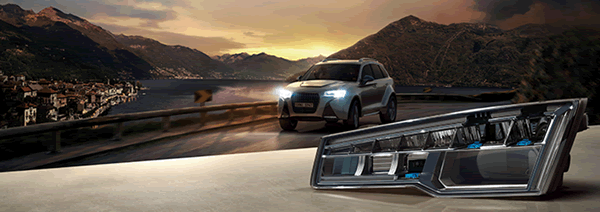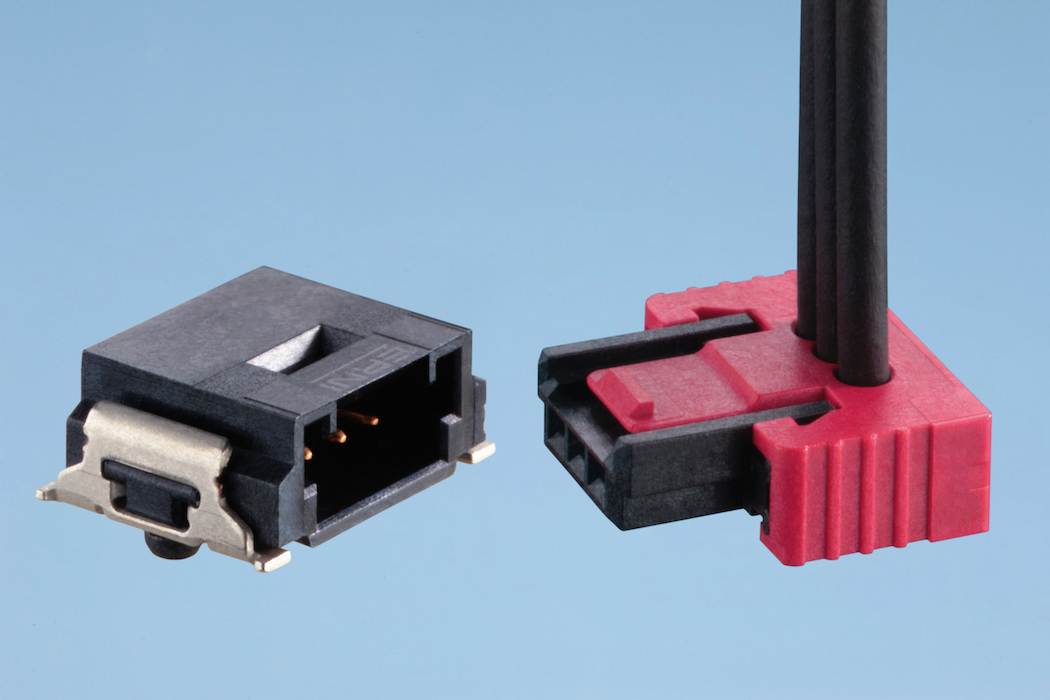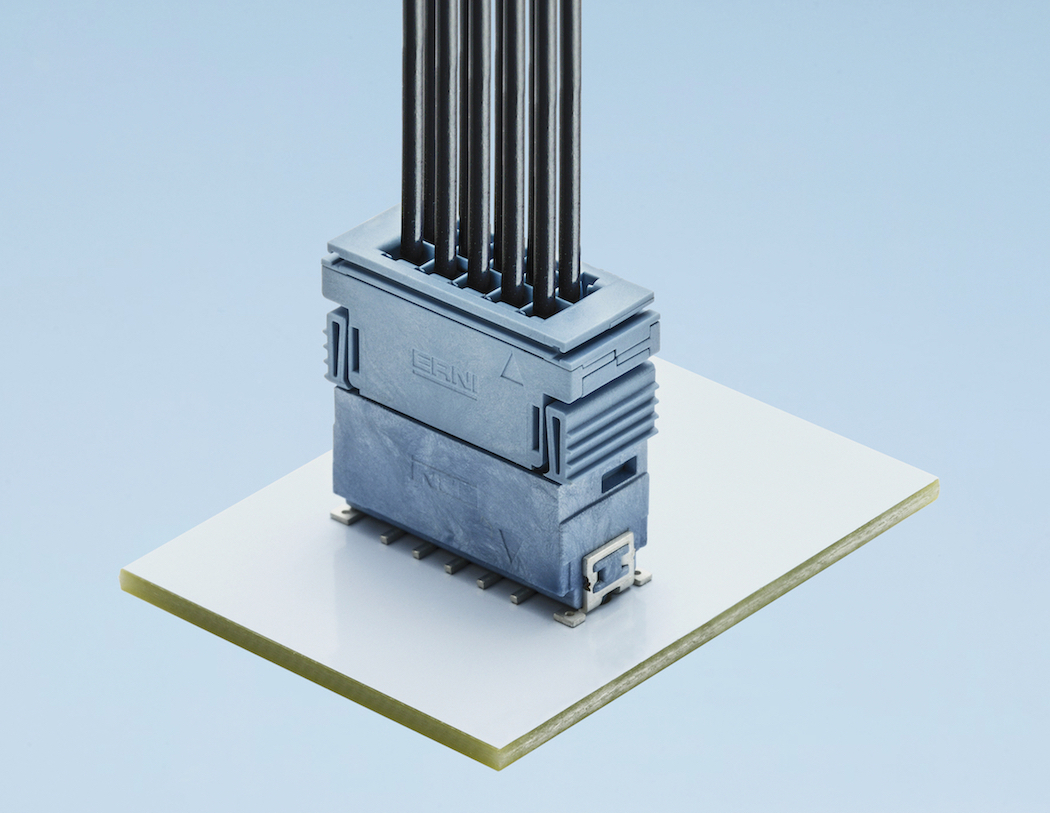Connectors for Automotive LED Applications are Lighting the Way
Connector solutions for automotive LED applications must combine ruggedness, reliability, long-term operation, increased functionality, apex performance, and ease of assembly — and all within a miniature and lightweight package.

Automotive lighting uses one of three technologies for the headlamps: LEDs, high-intensity discharge (HID) Xenon, or halogen. LED technology has been disruptive in many markets and applications, and has gained significant traction in the automotive market due to improved performance, low power consumption, design flexibility, and cost savings. A 2017 automotive lighting report from Yole Développment stated that, “faster-than-anticipated growth will see the market reach $35.9B in 2022 thanks to wide LED adoption.” Automotive lighting is driven by exterior lighting, with headlamps (66%) and rear lighting (17%) accounting for a total of 83% of the market revenue and interior lighting representing just 17%. These values currently represent turnover in terms of LED systems cost, but current demand is expected to remain steady, as new automotive LED applications are projected to increase in volume going forward.
Today’s automotive headlamp lighting systems make a significant contribution to road safety. Automotive LED technology turns night into day without bothering other road users. Sensor-enabled LED technology can detect lighting and weather conditions, adapting to these as part of a fully automated process, and intelligent LED headlight systems can actively direct the headlights based on road and environmental conditions including curves, weather (e.g., ambient lighting conditions), oncoming vehicles, and pedestrians. These advanced lighting systems also automatically control a vehicle’s beam state — high or low beam — during nighttime driving based on the detection of both oncoming vehicles and leading vehicles via video footage captured by a camera.
Automotive LEDs
European research and application growth are now beginning to be employed in the US market, further extending the variety of applications and regulations that continues to broaden interconnect opportunities and encourage new developments that further support automotive LED applications, especially in front lighting. With new functionality continuously being added, key components must keep pace with these changes. Interconnects are a vital component of advanced automotive LED lighting systems. Connector solutions for the market must combine ruggedness, reliability, long-term operation that rivals the lifetime of LEDs, increased functionality, apex performance, and ease of assembly — and all within a miniature and lightweight package.
Electromechanical Performance
The automotive LED industry has high demands on process reliability for connectors. Connectors designed for automotive applications must deliver the necessary functionality and guarantee the highest levels of reliability in active and passive safety and driver assistance systems.
For example, it is imperative to prevent damage to the male connector pins if male and female connector halves are improperly mated. Connectors that meet Koshiri security standards feature a unique housing design with distinctive guides that protect exposed contact pins from skewed or otherwise mismated connections. These special, scoop-proof pin contacts are sufficiently recessed so they cannot be bent, shorted, or otherwise damaged even if the mating connector shell is scooped into it during the mating process. Koshiri security connectors also feature an active latch, which offers both significantly higher mating integrity and additional protection from improper skew insertion.

ERNI’s single row IDC MiniBridge Koshiri connectors comply with all Koshiri security standards, have an ultralow 1.27mm (0.05”) pitch, can handle up to 8A per contact and operating temperatures up to 125°C, and deliver error-free mating and proven performance in space-constrained applications with high current demands, such as automotive LEDs.
Dual latching is another design element well suited for high-vibration applications like automotive LED headlamps. Primary and secondary contact locking ensures ruggedness and dependability without compromising valuable board space. For example, the compact MaxiBridge 2.54mm wire-to-board connector system utilizes a dual latching configuration to meet USCAR/LV214 automotive vibration specifications. A two-piece cable housing, combined with a dual latch, further supports terminal position assurance (TPA) requirements while the conductor material and design supports 12A per contact.
Miniaturization
Just like with most automotive applications, size and form factor are a significant challenge for designers of automotive LED applications. As headlamp designs become more sophisticated, the number and density of components on the PCB continues to increase. This increased density usually equates to design complexity with regard to both layout and architecture. Unfortunately, the outcome often means dealing with more heat, which needs to be removed from the system in order to maintain the operating reliability of the LEDs and other temperature-sensitive electronics.
To increase airflow, or at least minimize the blockage of airflow, designers are looking to reduce the height, width, and overall connector outline. Reducing the connector footprint can produce improved airflow, as well as provide design engineers with more PCB real estate for additional component placement or other demanding layout challenges. Connectors with a compact, scalable design are ideally suited to provide space-saving connections between PCBs and decentralized function units.

ERNI’s compact MaxiBridge 2.54mm wire-to-board connector systems delivers high-reliability, space-saving connections in automotive LED and transportation applications that employ 18–26AWG wire. Rated for up to 12A per contact, the extremely versatile series is resistant to a range of harsh-environment conditions and is guaranteed for up to 500 mating cycles.
Since field device requirements are very specific, a wide variety of connector options are available to meet the various demands of a range of individual applications with as little effort and expense as possible. Connector manufacturers deliver design flexibility with breadth of product and product variants, including a wide range of pin options, pitch options, current-carrying capacities, termination options, and more. For example, multiple color options with unique coding/keying can streamline and ensure proper cable systems integration. However, for automotive LED lighting applications, white versions are typically best, as they effectively eliminate the shadowing effects that can be caused by the connector system.
Future of LED Headlights
With the introduction and continued advancement of autonomous vehicles, the future purpose of external lighting will shift from maximizing visibility for the driver to enhancing communication with the car’s environment, and will include advanced new features designed to ensure pedestrian safety. As applications including autonomous vehicle signaling and laser headlight technologies expand into the market, automotive LED connectors will grow even more critical In response, higher-density pin-counts and dual-row form factors will become more evident in the very near future, as will further improvements in reliability and systems integration as connector position assurance (CPA) and electrical CPA (eCPA) are deployed in new connector platforms.
The automotive market is driving electronics manufacturers to deliver advanced components and systems that enable significant improvements in functionality for driver safety. Interconnects are a vital component of all of these systems, including external and internal automotive lighting systems. Finding a connector platform that will support the high-reliability operation of automotive LED systems can be challenging, but leading connector suppliers offer an increasingly broad range of robust automotive LED connectors with durable designs that meet the stringent size and safety constraints and demanding performance requirements of a wide variety of harsh environmental specifications.
Like this article? Check out our other Connector Basics, Harsh-Environment, and Automotive articles, our 2019 Article Archive, and our Automotive Market Page.





